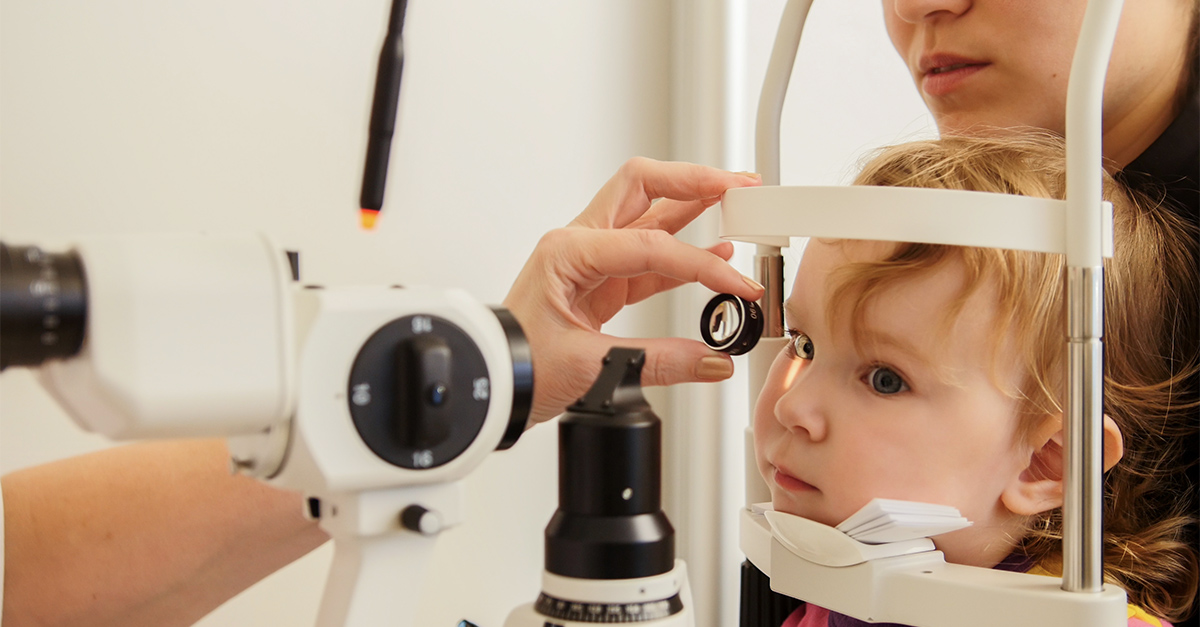Cerebral palsy affects motor control due to early brain injury, and those motor differences can interact with visual development. Neuro-optometrics focuses on how the brain and eyes work together, assessing visual pathways, eye movements, and postural links. While visual acuity might be typical, processing, tracking, and alignment may differ. Here is how cerebral palsy can affect vision:
Visual Processing
Visual processing is the brain’s ability to interpret light signals into useful information. It relies on attention, memory, and spatial mapping. Some people with cerebral palsy may experience delayed reactions or inconsistent fixation. These patterns can affect how quickly their eyes move or hold a target. They may experience crowding effects in text, a reduced visual span, and slower visual-motor reaction times. Fatigue can make these issues worse during long tasks. In real life, this might mean losing your place while reading, missing small details in busy scenes, or needing more time to organize information on a page. Factors like lighting, contrast, and task complexity also influence performance.
Gradual Eye Misalignment
Eye misalignment appears in various forms, such as esotropia or exotropia, and it may fluctuate with fatigue or posture. Other forms, either latent or manifest, may accompany alignment differences and disrupt fixation. Some people adapt with head turns or tilts to reach more stable fusion zones during tasks. Others close one eye in bright light or during reading to reduce double vision.
Low Abilities Interpreting Information
Children with cerebral palsy can have difficulty interpreting information. When the visual message reaches the cortex, perception must sort shape, size, and space; the process involves both dorsal and ventral streams. If the dorsal stream is less efficient, spatial navigation, motion detection, and visual guidance of movement may be compromised, making it harder to judge obstacles or stairs. If the ventral stream is less efficient, object or face recognition may take longer, even with clear eyesight. Worksheets with dense graphics may be a challenge. The same person might read single words quickly yet struggle when a page contains multiple columns, images, and side notes.
Specialty Lenses & Postural Therapy
Single-vision lenses address refractive error, and they may also modify visual effort during near tasks. Prism lenses shift image location to aid fusion or reduce head tilts during reading. Tints or filters alter luminance and contrast, which influences comfort in bright or high-glare settings. Testing maps how lens power, prism orientation, and working distance interact with fixation stability.
Postural therapy from a neuro-optometric clinic may be used. Therapists may target midline control, head righting, and cervical mobility; these changes affect vestibulo-ocular reflex function and visual stability. Cross-disciplinary sessions may include:
- Seated tasks to stabilize gaze during near work
- Gaze-holding drills paired with breathing to reduce tone spikes
Coordination between optometry, physical therapy, and occupational therapy tightens the link between visual demands and body support.
Treat Cerebral Palsy With Neuro-optometrics
A neuro-optometric evaluation assesses various visual and functional aspects, including visual acuity, visual fields, eye movements, accommodation, convergence, and processing speed. It also considers how these findings relate to posture and daily activities. The reports offer practical recommendations, such as adjusting seating, selecting suitable print sizes, pacing tasks, and optimizing lighting for home, school, or work environments. If you notice signs like frequent head tilts, skipping lines while reading, double vision, or hesitation when going up stairs, it’s helpful to schedule an assessment with a neuro-optometrist. Contact us today to book an appointment or request a consultation to learn about available testing options.
- crypto30x com zeus Review: Is It the Best Platform for U.S. Crypto Traders in 2025?
- Super Scatter Juara100.org Medal: The Ultimate Guide to Winning Big in Online Gaming
- Ziuqyazhmizz: Ancient Slavic Practice Explained – Meaning, Benefits & Daily Life Guide
- Zaxtexporoz: A Simple Guide to Xcer Tools, Digital Trends, and Smart Solutions
- Casîo: A Symbol of Innovation, Durability, and Global Trust




